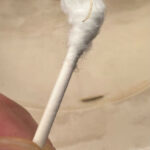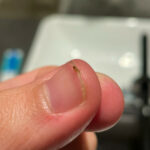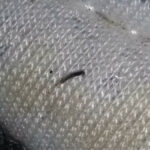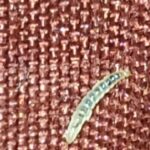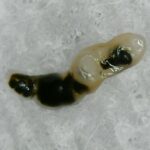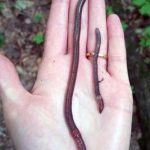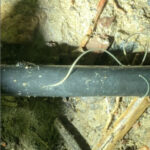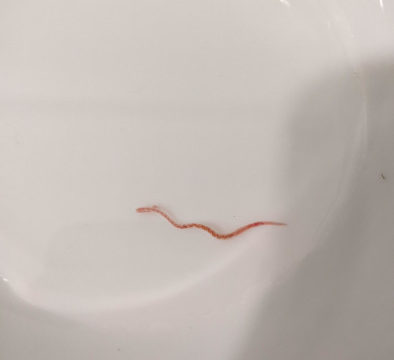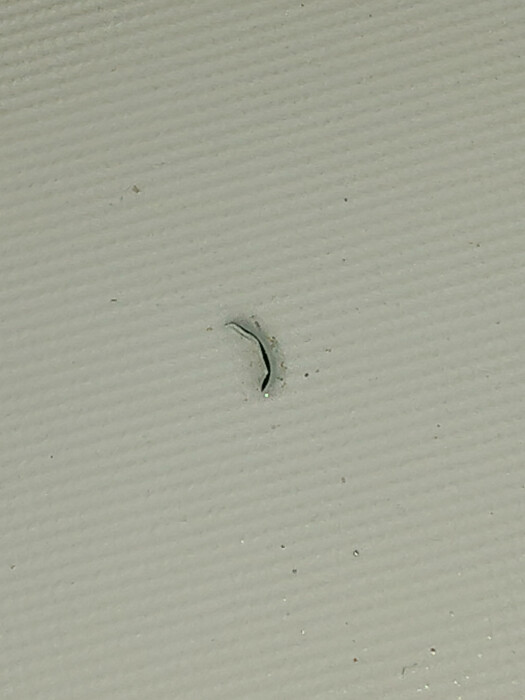
“What are these clear worm things with black insides?” asks Robyn in her submission regarding the organism pictured below. “They were in the bathtub after giving my dog a bath. HELP!” Although the photo is quite blurry, we think that — given what we can see, Robyn’s description of the creature, and the context in which it was found — Robyn found flea larvae. Now, we realize that saying this could be cause for panic, given that fleas do infest dogs, and it is not the nicest thing to hear that this could be a possibility. What we will say is that flea larvae do not have the same diet as their adult counterparts, meaning that while the adult flea attaches itself to the outside of animals like dogs to suck their blood, the larvae do not do this.
Flea larvae are scavengers, and instead eat dead insects, dead skin, loose hair and fur, and animal waste. Sometimes, they have been found on dogs (and other animals) because they are eating the loose fur that is on their bodies, but not because they are feeding directly from the dog. With all of that said, we still recommend that Robyn take her dog to the vet to get checked for fleas, as the presence of the larvae indicates that, at some point, the adult fleas were there. We cannot confirm in what capacity the adults were present, which is to say we cannot confirm if Robyn’s dog was or is experiencing a flea infection. The reason we cannot do this is because we are not medical professionals, and only a medical professional can identify parasites as doing so is tantamount to providing a diagnosis.
What we can do is recommend some methods for battling flea larvae infestations, and for preventing future flea infections. Alongside taking one’s pet to the vet to get treated, it is vital that one treats one’s home too, because otherwise the flea infection can just continue once the larvae mature into adults. Flea larvae are commonly found where their food is found, so cleaning dog beds and any areas where the dog spends a lot of time is super important. Additionally, cleaning one’s bed sheets and closet is also important, as flea larvae can eat human hair too. This cleaning consists of vacuuming and laundering, and might have to be done several times over the span of a couple of weeks to ensure that any eggs and larvae are eliminated.
In conclusion, we think Robyn found flea larvae in the bathtub with her dog. The larvae themselves are not harmful to dogs, but the adults are, so we suggest taking the dog to the vet to be on the safe side and cleaning any potentially-infested areas of her home. We hope this helps, and we wish Robyn and her dog the very best.
All About Worms is always free, always reader-supported. Your tips via CashApp, Venmo, or Paypal are appreciated! Receipts will come from ISIPP Publishing.
You might also find these guys interesting!




